Flipping the Classroom
Nevertheless, what must be done, must be done. I decided to take the flipped classroom approach - whereby the children had to read a section and possibly do the experiment before coming to class. We had not been able to complete the 4th grade curriculum before lockdown, so we started up with the unit on Water.
The first experiment was to take a ruler, put a drop of water on it and observe how the water flowed in different directions and speeds whilst tilting the ruler. Most children conducted the experiment before coming to class and enjoyed narrating their experiences. We discussed where all they have seen water flowing - in a drain, down the street during a downpour, in their bathrooms.


As the class was conducted while Chennai was in intense lockdown, we had to skip a favourite activity whereby children cut open a tetra pack and make water wheels. I’ve a good mind to assign it later when it's safe for children to recover their textbooks and workbooks from school.
Technology Challenge
One challenge we immediately faced was having to teach children how to do online schooling - logging into Google Classroom, activating Google Meet, using pdf editors to write in the soft copies of the Workbook, and how to stay safe and healthy online.. It seemed an insurmountable challenge - these kids were quite unfamiliar with technology in part due to Al Qamar’s strict “No Screen” policy. The internet speeds were poor. Some kids were using mobile phones to attend online classes. We held training sessions for the children in all areas but hiccups and disruptions occurred for quite some time thereafter.
Floating & Sinking
We moved onto the floating or sinking activity. I put together a jar of water and several items which we would test. We started off by predicting if an item would sink or float. They quite enjoyed seeing if their guesses were correct. I asked them to repeat the same activity at home using different items.
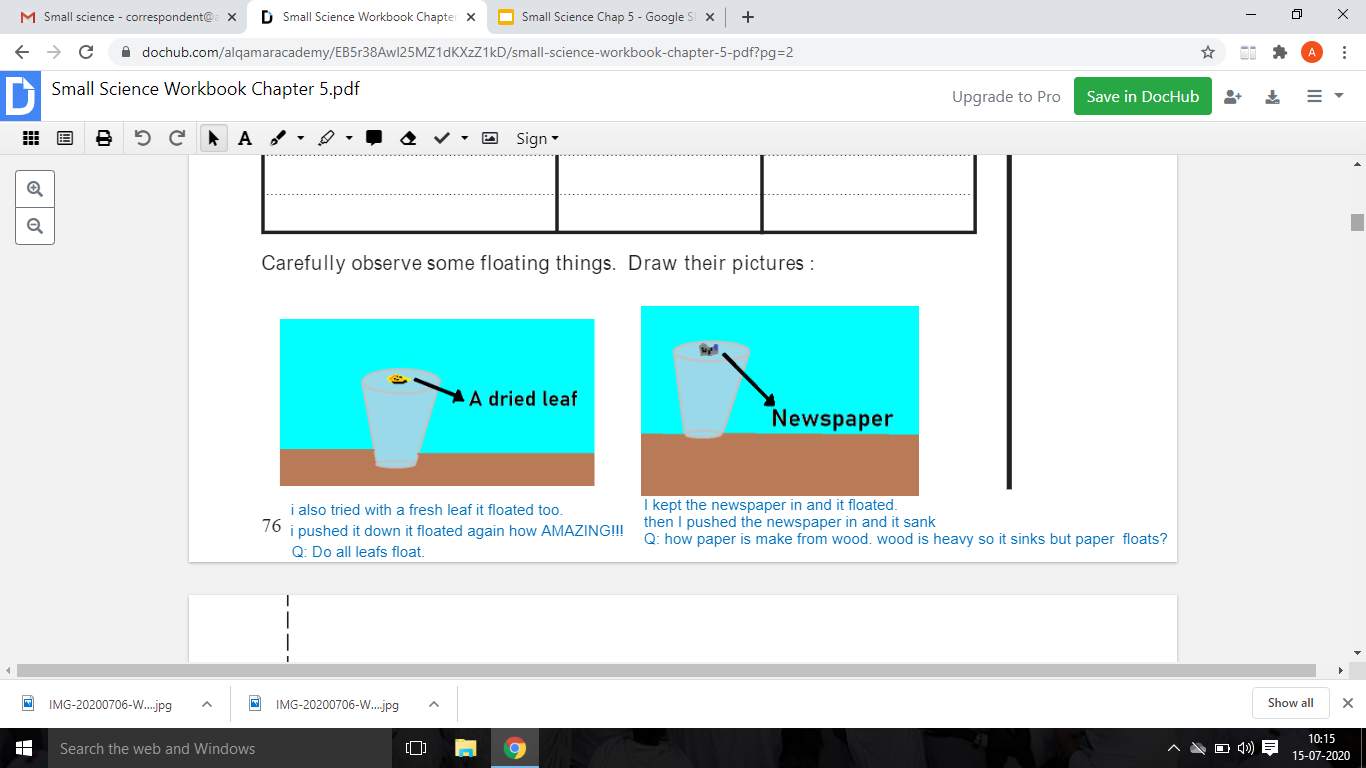
Mixing
We tried mixing different liquids in water - they love the oil and water experiment, never tire of seeing it.
The next class was devoted to me demonstrating how salt and sugar mix in water, but rava does not. I made do with rava, asstaying in an apartment, during lockdown, I couldn’t even get mud or sand. The children learned the terms - solution, turbid, mixture. They had to repeat the experiment at home, dry out their solutions and note what happens.
Active Homework
The homework activity was great as it led to two children exploring further.
One child made one sugar solution and another with jaggery. She found that once the two solutions had dried up, red ants were coming to the sugar solution and black ants to the jaggery solution. Turned out she had put the bowls in two different rooms. This was a great opportunity to teach them about keeping all variables the same except the one being measured. I asked her to repeat the experiment but this time keep the bowls in the same room. I don’t quite think followed up but the discussion activity was enjoyed by all.
Another child evaporated a salt solution in a jar. She got the most fantastic crystals forming even as the solution was still in the process of drying up.
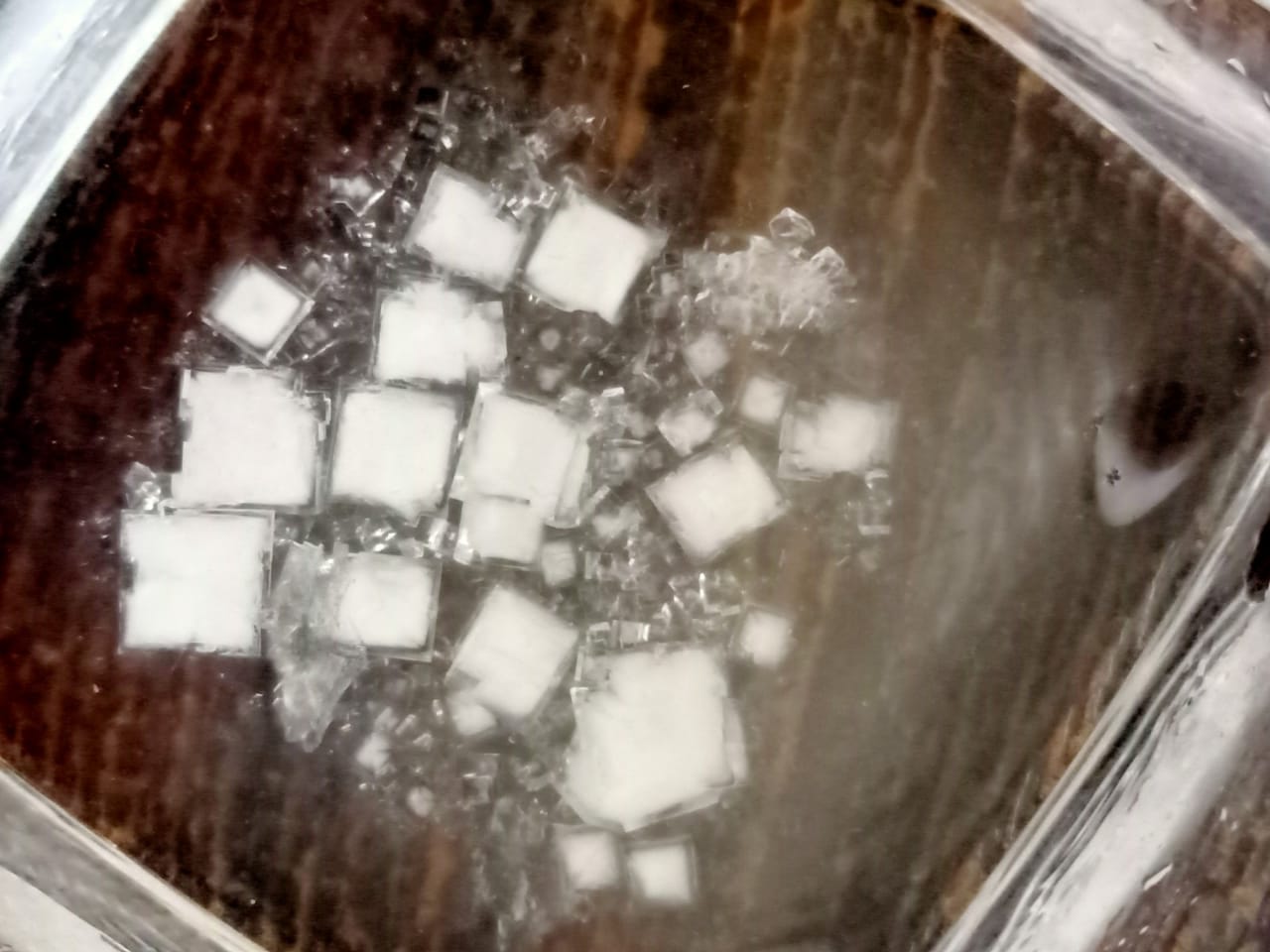
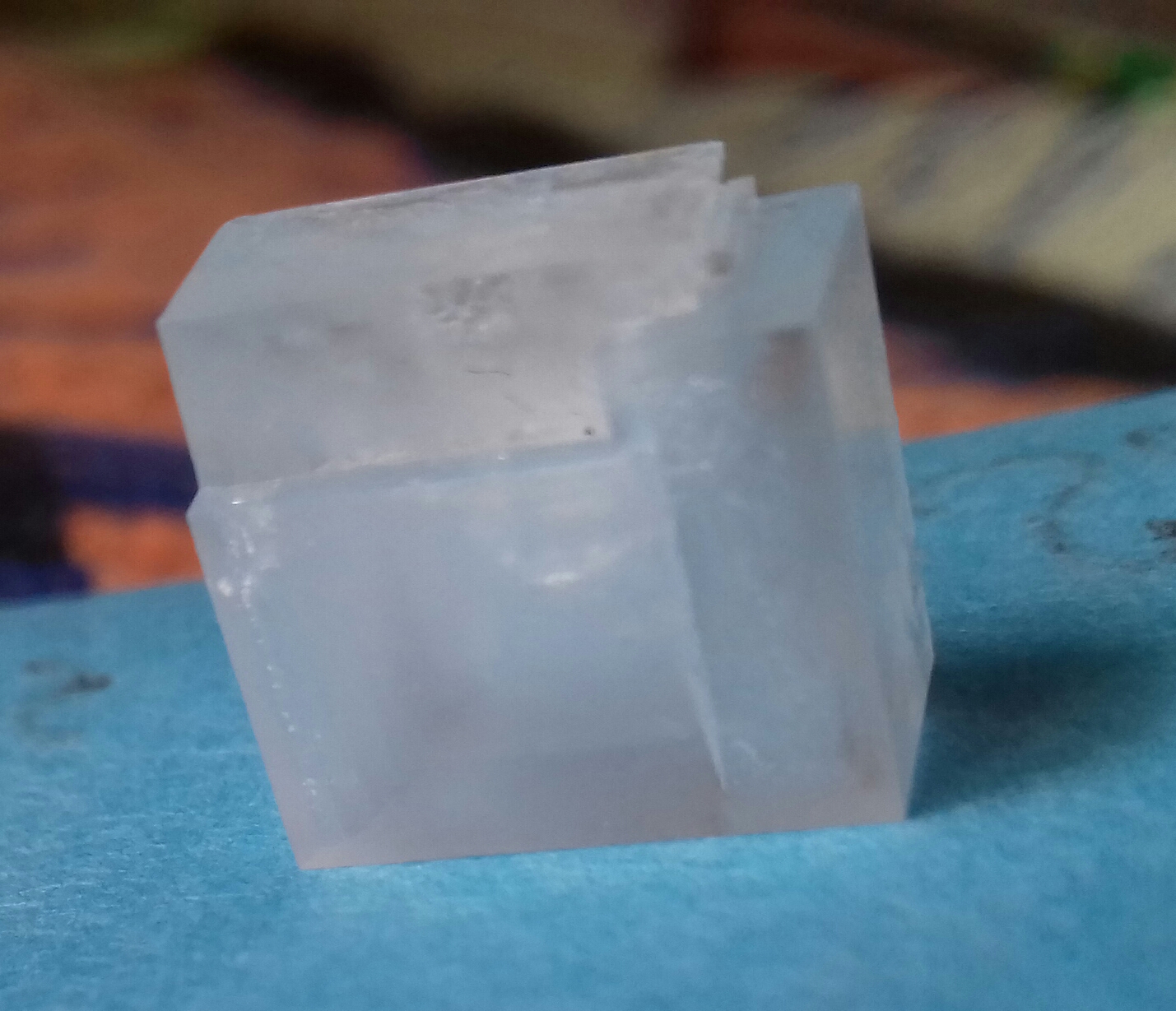
This picture taken after a few days shows the size of the crystals. The student noted that the largest crystal was 1cm long. I’m sure this experiment was quite fascinating for her.
Watching Water Climb
We then moved onto exploring whether water can climb. I asked the children to keep a jar of water, a string and a cotton cloth handy. During class, I asked them to read the experiment, understand what they had to do and conduct the experiment. The children put the string and cloth partially into the jar and let the rest hang outside the rim. There were squeals of delight as they discovered that the string soon got wet and the cotton cloth followed.
I then demonstrated an experiment they love. I placed 4 jars of differently coloured water, and stuck tightly rolled tissue from one to the other. The children thoroughly enjoyed seeing how the coloured water climbed up one side of the jar and took the paint into the other jar. Another student redid the experiment and home and Whatsapped me the picture below.
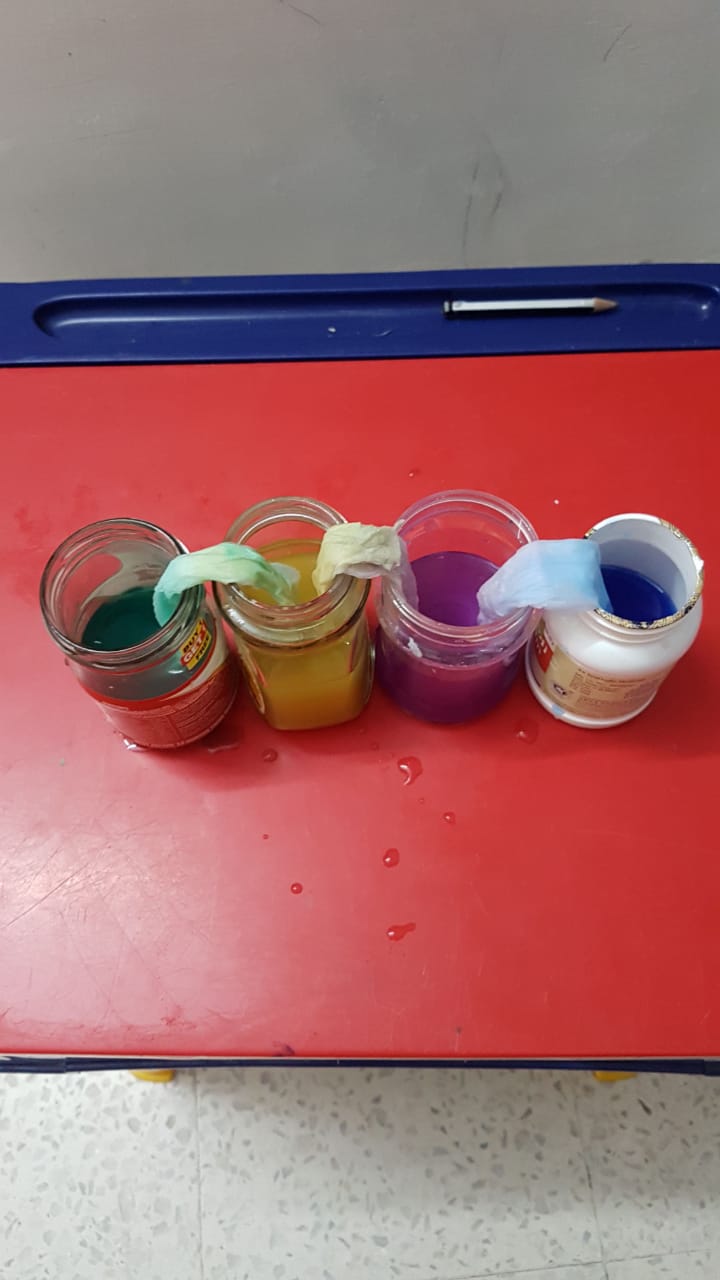
We had to skip the water/ ink climbing the chalk experiment- no chalk available,- and moved onto the next experiment. Here we partially filled a jar with 2-3 cm water and added a lot of rava to it. The video call wasn’t all that clear but children did see how the water rose up the rava slowly.
Evaporating & Recording
Next we moved onto evaporation. This was another experiment which I asked the children to conduct at home and record the results daily. Children had to keep two identical glasses the same amount of water - however one glass was open and another covered - and observe the results for 10 days. One child astounded me with her meticulousness. She not only measured the water level daily, but diligently took and shared photographs by email. I’m sure she found satisfaction in seeing how the water level in the open glass kept declining daily. She finally compiled her results in a Google Doc with photographs.



One child developed enough expertise with the pdf editor to fill in the graph tracking the water levels with different colours. Remember - these were children who were complete novices with technology at the start. By now most children were typing comfortably in their workbooks.
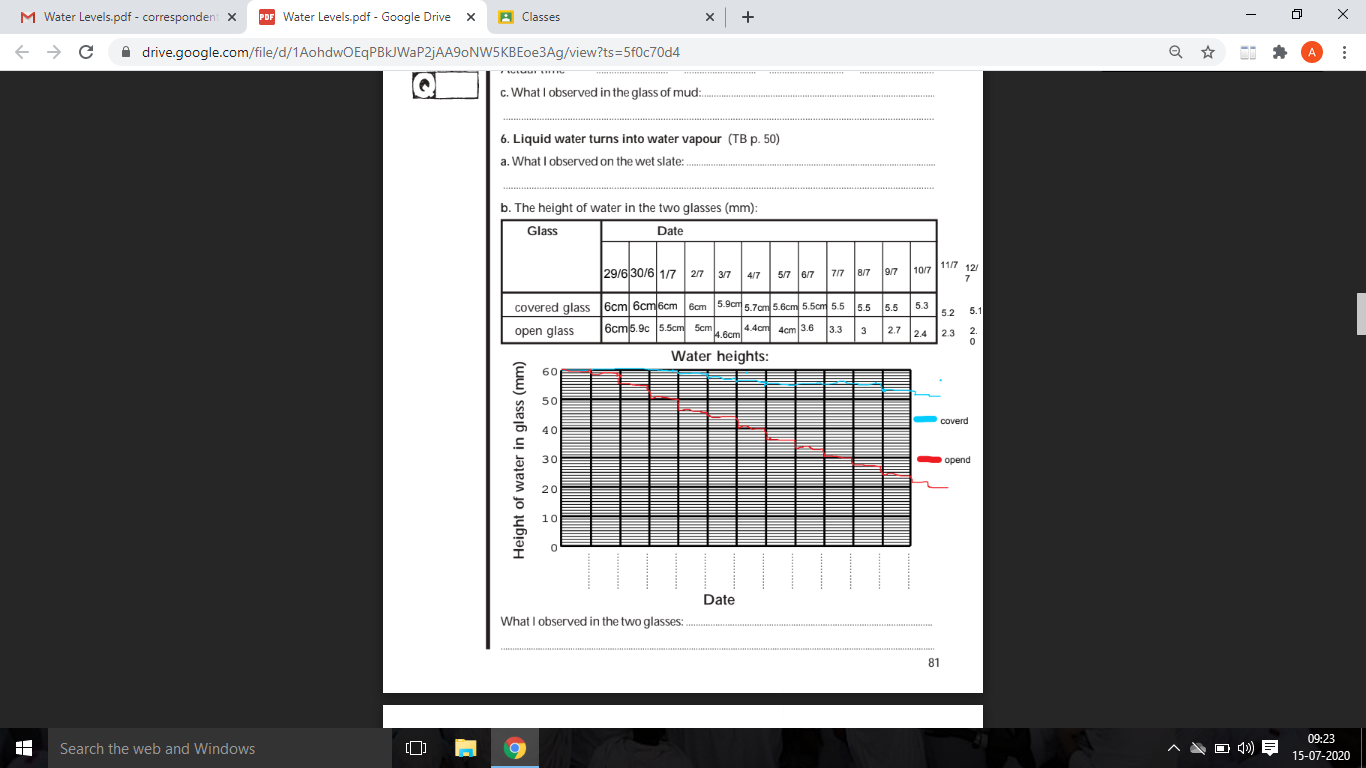
The next few experiments were on condensation and real fun. I asked the children to keep a closed cold bottle of juice ready in the fridge for the class the next day. Additionally I asked them to keep two glasses, a towel and cold water. During the class, the children brought out their cold bottles of juice. I asked them to feel the outside of the bottle and they reported that it was wet. They had to wipe the bottle and touch it again after a few moments. They noticed that the bottle surface was wet again. This led to an animated discussion about where the water had come from. Some were adamant that the water had come out from the bottle. I asked them to observe and taste the droplets outside - they reported the droplets were colourless, unlike the juice, and tasteless. However, they were still convinced the water had come from inside the bottle. “Possibly out over the top.” “Maybe there are nano holes in the plastic through which the drops came out.”. Finally a couple of them cottoned onto the real explanation “Aunty the air outside the bottle has water vapour, right? When the air touches the cold bottle, the water vapour becomes water!” I shared this explanation with the other children and they seemed to understand it. However, while checking their answers in the workbook, I realised they had not internalised the explanation - and still stuck to the “water from inside the bottle” theory. I think children construct a world view based on their observations and conclusions, and even if erroneous, it is not easy to replace this mental model by simply talking, explaining or even doing the experiments and showing proof.
Condensing & Integrating
The final experiment was one where they had to integrate the evaporation-condensation cycle. This one was also conducted at home by each child. Children put a small jar with stones inside a larger container with shallow water, covered the bigger container with saran wrap and weighted the cover down with a stone. This setup was then put out in the sun. The children noticed that water droplets had formed on the cover - and could relate that it was due to water evaporating and then condensing. They also opened the containers and felt the stones - some reported that the stones had got wet. This experiment really brings home the dual process of evaporation and condensation.

I was quite surprised to see sketches of this experiment and expert typed answers in the Workbook.

The Workbook provides for interesting questions that challenge the children to apply their learnings in different contexts. This naturally led to great discussions. One was focussed on listing the similarities and differences between water and water vapor, ice and water. I think children are now familiar with this exercise and handle it well.


Storytelling
It also takes a multidisciplinary approach and asks kids to recount a time they played in water, compose sentences and even write a story.

We could finally integrate all the learning into the story of the water cycle. I’ll sign off leaving you to enjoy this adorable account about “Bubbles”.
BLOWN AWAY - By Athiya Fathima
There was once a challenging, adventurous, naughty droplet called Bubbles. So - now, be quiet and listen to the strange story of Bubbles and the Water cycle. So, let’s start.
Bubbles was a single droplet who lived with his mother. One day Bubbles was in the garden playing, when suddenly a strong wind blew, he heard Mama shouting ‘’Bubbles come in!!! Or you’ll get blown away!! Come in at once!!’’. (That’s called ‘Evaporation’. Sorry to interrupt, but take notes!).
Bubbles was really curious and could be irritable at times. Bubbles wondered, “What does Mama mean ‘blown away’?? Will I be flying on a magic carpet? Aah wonderful.’’ he thought, and at once he drifted into dreams. After a few minutes, Bubbles realized he was drifting into the air, and heard Mama’s irritated warning voice. Why can’t his Mama leave him alone?? And again, he drifted into thoughts. Then Bubbles really felt like he was flying into the air, he looked down and gave a yell. Then suddenly he remembered why he was going to fly in the air. The reason was he was Evaporating (Actually he read it in a book called ‘’Water Cycle’’). “Yoo Hoo!!. Mama!! Mama!! I am really flying at last!!!”
Bubbles saw some massive white cotton candies (which were actually clouds). Slowly he landed into one of them. He then realized that he was condensing because of the cold and hot weather. He felt some sort of chill feeling in between his legs. Suddenly he realized he was not at all alone, he felt like he was in one of Chennai’s bus stands (He had seen one once when he visited Chennai). Bubbles saw that everyone was going to burst out of the cloud. It was a long time and he started to feel hungry. Bubbles was bored and saw that everyone in the next cloud was slowly falling down. Slowly he remembered - he had read the reason for the falling drops in a book. (Bubbles was even a reader). In that book, the reason was called ‘’Precipitation’’. Bubbles bent a little forward to take a better look when he too was flying down the sky!!
‘’WHOO HOO WHOO HOO’’ Bubbles cried, and landed down with a big Thump!!. Oops!! My back!! Bubbles yelled and started walking like an old granny towards an Auto. Now he was in great trouble he was lost!!. But thanks to the Autorickshaw Uncle who knew every location- and was an old neighbor of Bubbles, Bubbles reached home. He got a big scolding from Mama. “Oops!!” Bubbles thought “I wish I had never returned home!!!”
THE END.



